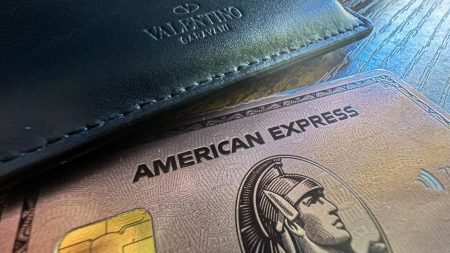The annual percentage rate (APR) on a credit card is the total cost of the credit to you. The periodic interest rate that the issuer applies to your outstanding credit card balance to arrive at your finance charge for a billing period is essentially your APR for that period. Most credit card issuers charge cardholders a variable interest rate based on the prime rate, which is the rate that banks charge creditworthy corporate customers and is linked to the Federal Reserve’s key benchmark policy tool, the federal funds rate.
Issuers tack on a margin to this prime rate, which serves as a base rate, to set interest rates for credit card users. The prime rate had been going up as the Fed changed its interest rate policy. Since March 2022, the Fed has raised its target interest rate 11 times., but stopped as of July 2023. At its July 2024 meeting, the Fed continued the “holding steady” trend and kept its target interest rate in the 5.25 percent to 5.5 percent range.
For now, though, the central bank is not quite done in its battle against inflation, and rates will continue at the current high levels for the time being. This has the ripple-down effect of holding your credit card interest rates at current high levels too.
A series of rate hikes
The Federal Reserve has taken up its target interest rate several times since March 2022. Beginning with a 0.25 percent increase in March 2022, the first rate increase in nearly four years, the Fed followed up by increasing it 0.50 percent at its May 2022 meeting. For June, July, September and November 2022, the Fed raised its target rate by 75 basis points at each of these meetings, as it aimed to tackle inflation and also end its coronavirus-related stimulus efforts. And in December 2022, the Fed moderated its rate hike to 0.50 percent.
In February, March, May and July 2023, the Fed continued with its moderation, going for an increase of 25 basis points at each of these meetings. At its June, September, November and December 2023 meetings, as well as in January, March, May, June and July 2024, the Fed held off on a rate increase, while it watched to see the economic impact of its earlier actions.
How Federal Reserve policy works
The target federal funds rate is the rate at which the Fed desires banks to lend money short-term to each other. The Fed aims for this rate, rather than explicitly setting it. That’s why it’s a target rate.
During times when the central bank wants to boost the economy, it aims to keep lending costs low. A low interest rate regimen started in 2019 as concerns about a global slowdown ensued. This rate-cutting action continued as the pandemic hit in 2020, causing the Fed to take down its target rate to a 0 percent to 0.25 percent range.
The Fed also takes other measures, such as buying securities, when it wants to release more money into the economy and lower interest rates. The Fed engaged in such “quantitative easing” or bond buying to boost the economy during the recession that started in December 2007 after the housing market collapse impacted the global financial system. Its target rate went down to the 0 percent to 0.25 percent range back then, too. It slowly started to raise rates beginning in December 2015.
More recently, the Fed has been taking measures to make credit more costly and fight inflation with its higher target interest rates. It is also selling off securities that are on its balance sheet, in so-called “quantitative tightening,” in order to reduce the money supply and slow down the economy.
Why are credit card rates so high?
With the federal funds rate currently in the 5.25 percent to 5.50 percent range, you might be wondering why the interest rate your card issuer is charging you is so much higher. The average credit card interest rate was above 20.7 percent at the end of April 2024. Considering that the U.S. prime rate was 5.5 percent in January, this is indeed a hefty markup.
So, why is there such a big markup on credit card interest rates? For one, credit card debt is unsecured debt. It’s not backed by any collateral, unlike a home mortgage loan, which is backed by your house. If you take out a mortgage loan and default on it, the lender can repossess your house. Similarly, if you take out an auto loan and don’t keep your end of the deal to make payments, the lender can take back your car. With a credit card, there is no actual collateral for a lender to repossess.
Not only that, the delinquency rates on credit card loans tend to be higher than the rates for all consumer loans, according to data from the Federal Reserve. For instance, in the fourth quarter of 2023, while the delinquency rate on all consumer loans was at 2.62 percent, the rate on credit card loans was at 3.10 percent.
Another aspect is that the Credit Card Accountability Responsibility and Disclosure Act of 2009 (CARD Act) provided more consumer protection. This means card issuers face more risks, and that is also reflected in their interest rates. For instance, among other protections, they have to give consumers advance notice of any upcoming increase in interest rates (interest rate changes issuers make that don’t result from Fed actions), as well as advance notice of any other significant changes.
How you can get better card interest rates
While you as a consumer can’t manage the macroeconomic factors that cause the Federal Reserve to set its target interest rates, you can still aim for a better interest rate on your credit card debt. Some ways to do this include:
- Managing your credit responsibly so that you have a good credit score. Those with higher credit scores pose a lower default risk to issuers, and they tend to land better interest rates.
- Even if you have a higher interest rate and carry a balance, you can pay less interest on your credit card debt if you make payments whenever you can. Since interest on most credit cards is compounded daily, any money you pay even before your payment is due will bring down the total interest payments you make.
- If you have held a card for a long time, you could try to negotiate a better rate with your issuer. Considering that it wants to hold on to your business, you might be able to angle for a better rate.
- If you are going to be carrying a balance for a while, you could transfer it to a top balance transfer card. Of if you have a big purchase to make, consider an intro 0 percent APR credit card. In these cases, you should be vigilant about paying off the balance before this 0 percent introductory APR period ends so that you don’t end up in the same old place of facing a high interest rate again. In case you make new purchases, you will not enjoy an interest-free grace period on them, since you are already carrying the transferred balance.
- You could also pay off a high-interest-rate card loan using a home-equity loan (which tends to carry a lower rate because it’s backed by your home) or a personal loan.
The bottom line
Card rates are high because they carry more risk to issuers than secured loans. With average credit card interest rates above 20.7 percent, the best thing consumers can do is strategically manage their debt. Do your research to make certain you’re receiving a rate that’s on the lower end of a card’s APR range. The rate you get depends largely on your credit score, but if you connect with a customer service representative, you may be able to negotiate your rate. So, now would be a good time to aim for the best interest rate you can wrangle.
Read the full article here
















